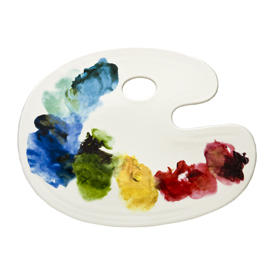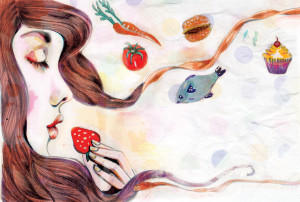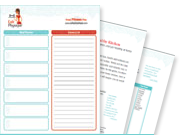By Michelle May, M.D.
There’s a harmful idea virus (meme) that has become so widespread that it is accepted as normal. It has subtly integrated itself into our language, our thoughts, our beliefs, and our behavior. It has become conventional wisdom.so almost no one questions it.
So what is this idea virus? It is the belief that restrictive eating is healthy. It often starts with information about health, nutrition, or weight loss that mutates into rules and restriction. But the blurring of the line between healthy eating and restrictive eating is the difference between a work of art and paint-by-number. Either way, you end up with a nice picture—until you get up close to take a look.
Mindful Eating vs. Restrictive Eating
In Charge In Control
Nourishment Diet
Fuel Calories
Quality Points
Healthy Skinny
Aware Preoccupied
Conscious Consumed
Mindful Vigilant
Information Dogma
Guide Rules
All foods fit Good or bad
Balance Perfection
Variety Temptation
Moderation Deprivation
Choosing Earning
Deciding Rationalizing
Flexible Rigid
Hunger based By the clock
Comfort Portion sizes
Physical Activity Penance
Effortless Willpower
Trust Fear
Learning Failing
Self-acceptance Condemnation
Enjoyment Guilt
Pleasure Shame
Freedom Bondage
The main reason that this virus is so powerful is that it has a built-in protective mechanism: the underlying belief that you are incapable of managing your eating without rigid rules. This ensures the survival of the virus because restriction actually leads to more cravings for the foods labeled “bad.” When you finally “give in,” you’re more likely to overeat, “proving” that you are incapable of handling freedom or choice leading to more restriction.
This idea virus is successful at replicating itself because it initially appears to be beneficial to its host. Often “lifestyle change” and “healthy eating” means “you’re going to be on this diet for the rest of your life.”
How is this Idea Virus Spread?
You are most prone to this virus if you think you should lose weight. Others who have the virus will try to give it to you in an effort to help you (or sell you something). It takes the form of loving suggestions, professional advice, and even harsh criticism.
This idea virus is propagated vertically through advertising, television, magazines, books, the Internet, and medical research. It is spread by marketers, models, celebrities, reporters, experts, bloggers, researchers, and legislators. It then spreads horizontally from doctor to patient, dietitian to client, friend to friend, wife to husband, and parent to child. This virus is also swiftly moving from the United States to the rest of the world.
How to Cure This Virus
Take a close look at the “picture of health” you’re painting. Is it constrained by rigid lines and someone else’s choice of colors? Or does it express your individuality, your lifestyle, and your preferences? Here are specific steps for creating your work of art.
- Filter everything you read, hear and say by asking, “Is this restrictive in nature?”
- Begin to monitor your self-talk. When you notice restrictive eating thoughts, gently replace them with mindful eating messages from the first column.
- Find role models, health care providers, and a non-diet approach that don’t propagate the virus. With new tools, support, and practice you can eat mindfully!
- Use nutrition information as a tool not a weapon. Remember, all foods fit into a healthy diet using balance, variety and moderation.
- Perfection isn’t necessary. Accept that you’ll sometimes regret certain choices you make; that is part of healthy eating. When you don’t get caught up in guilt and shame, you’re able to learn from your experiences.
- Repeat this often: “It’s just food and I can learn to trust and nourish myself without restriction.”
- Discover joy in creating your own masterpiece!
Michelle May, M.D. is a recovered yoyo dieter and the award-winning author of Eat What You Love, Love What You Eat: How to Break Your Eat-Repent-Repeat Cycle. Find other articles and resources at www.AmIHungry.com. Copyright Michelle May MD. Reprinted with permission.



